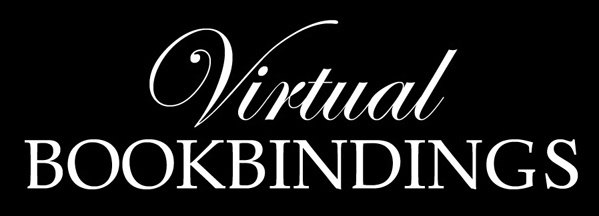

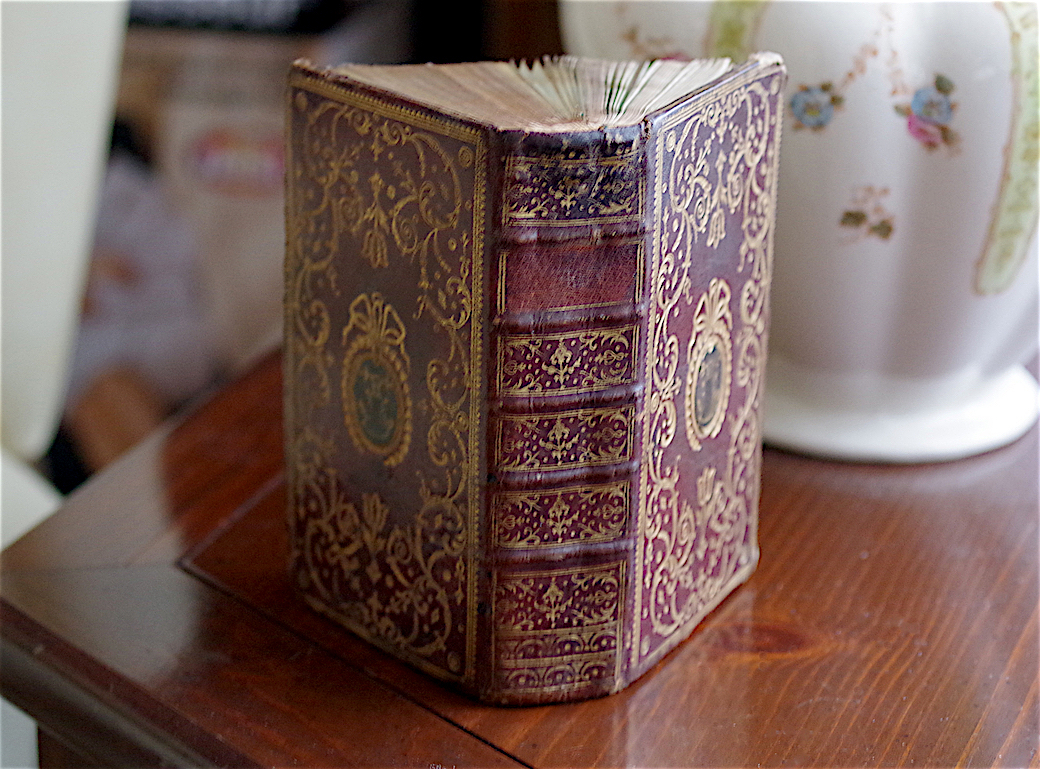
| Once you get this binding in your hands there are 2 ways that almost anyone can use to study the imprints scientifically. The first is a simple flat bed scanner with which you can easly make very precise images of the boards, the spine however is another story. The surface of the spine is never flat and the raised bands means that you are not going to get sharp images with a flat bed scanner even of it was. You will however be able to get very accurate measurements from a scan of the spine, this is important because your next option will be to use a good quality camera, preferably with a macro lens. A photograph is not going to give you accurate scale even if you try to include a ruler in the picture, however you can resize the photo to match the scan. An example is shown in Comparative Diagram 1. Here we see the scanned image with the usual scale shown and the photographic image reduced to the same size. |
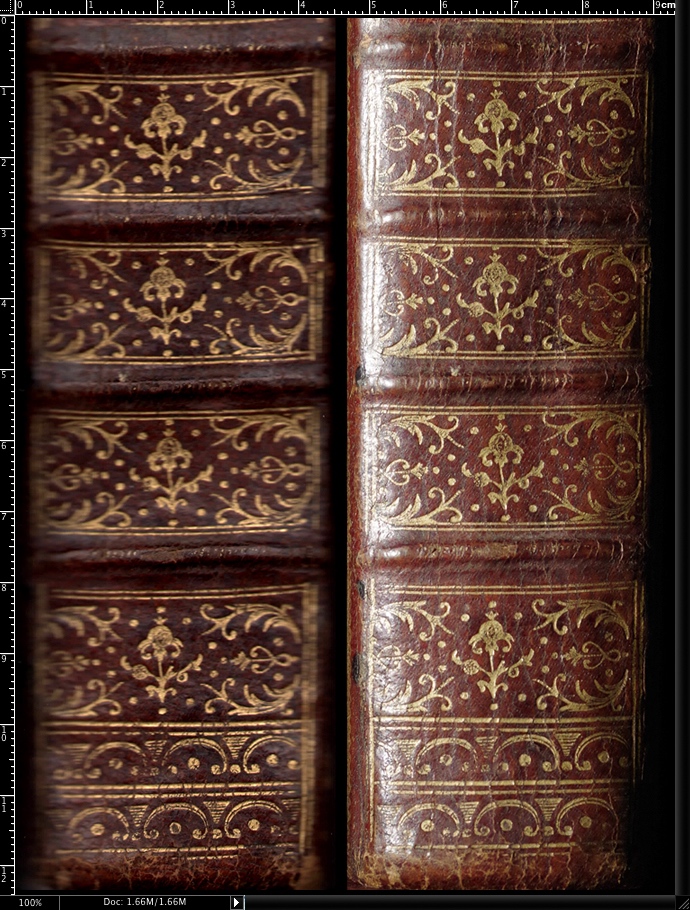
| We can take this proceedure a step further and plunge into the realm of microscopic detail. A camera with a macro lens will allow you to get images at even higher resolutions than the standard flat bed scanner (often limited to 1200 dpi or less). In Comparative Diagram 2 we see an example where I show a scan of the palette compared with a high resolution photo, the scan is only for scale purposes. If you click on this image you will see a 2000 dpi enlargement. This can be useful, if you want to count the number of segments in a stem, for example. Here we are able to identify imprints and imprint flaws that will yeild certain proof of a binder's identity. |
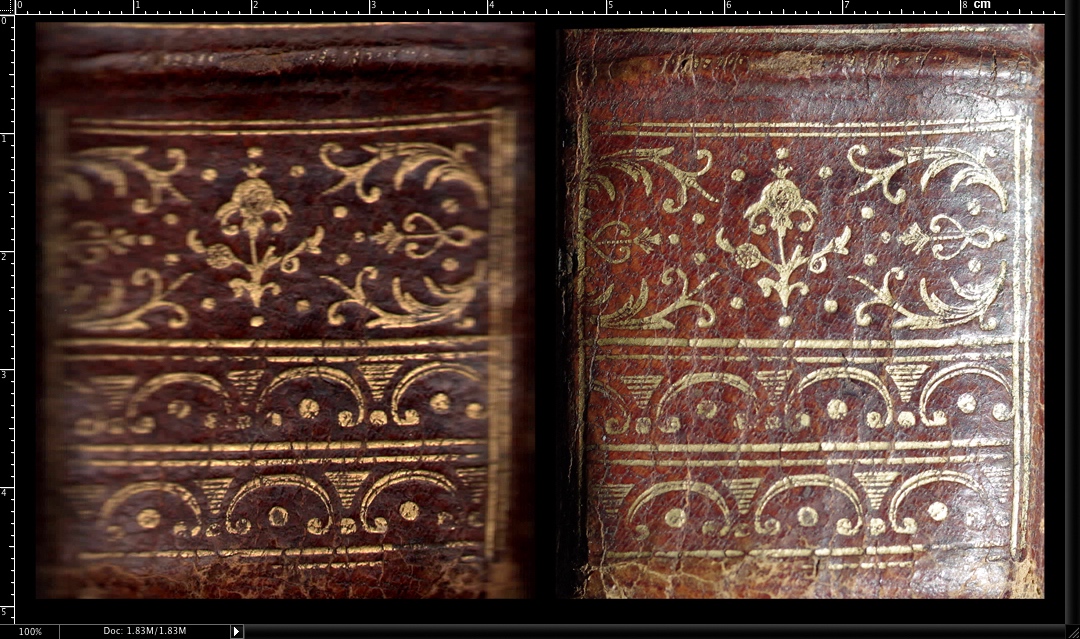
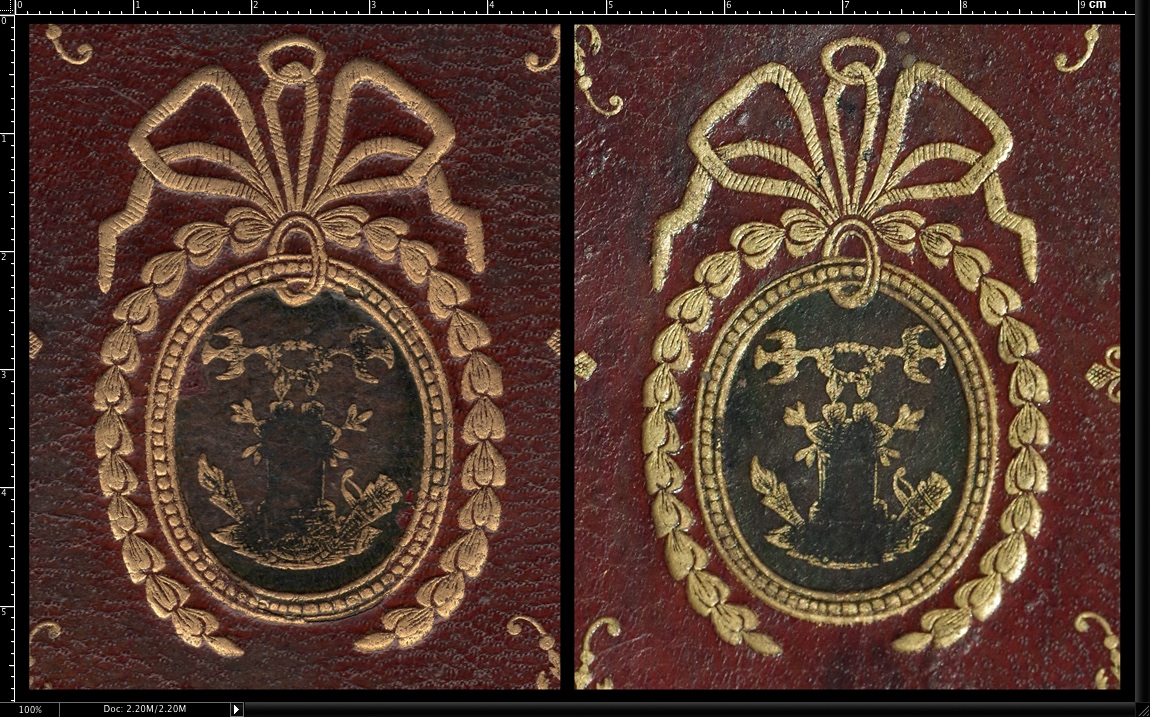
| In Comparative Diagram 3 we examine the tricky issue of the partially effaced centerpiece medalion, here we need again high resolution images. These medalions may or may not have been part of the original detailing by Jubert, the black leather center has been glued onto the surface and is not a proper inlaid mosiac, the back piece has been nicely cut and fitted to include a tiny piece of leather to fill the gap in the ring that joins the ribbon to the medalion, however the front example has been cut in an irregular shape that extends upon the exterior ring and yet has an identical ring imprint that matches that below it, almost as though this leather was roughly cut from the center of another binding that had been decorated with the same medalion. Philippa Marks, well known author and Curator of Bookbindings at the British Library has suggested that this central decoration may not be armorial as I first surmised "the birds at the top holding a laurel wreath are not what one would expect on a coat of arms; one would expect a helmet or a hat or a crown. It looks as if there is a quiver full of arrows to one side and a flaming something or other on the other side, perhaps it is an emblem". It will be a lucky find if we can identify this emblem/medalion. We can see that below the wreath there looks to be two flaming hearts as well. Now if you plug these clues into google "emblem 2 birds a laurel wreath 2 flaming hearts a quiver of arrows and a torch" you discover something amazing! Here is the first thing that came up (click here to see it) |
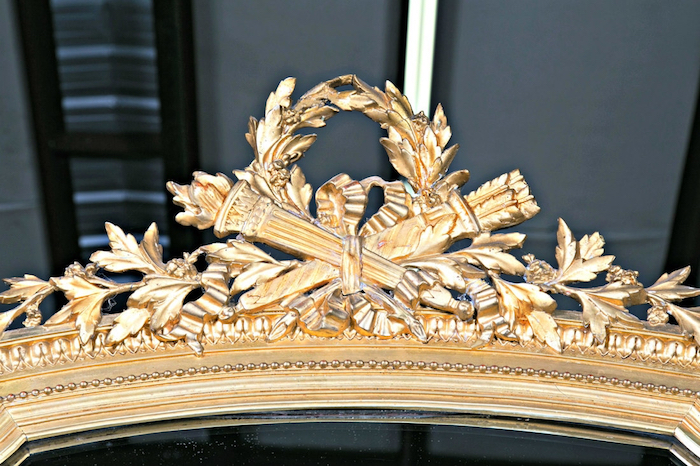
| "Beautiful French Louis XVI style hand-carved neoclassical giltwood mirror having original glass. The intricately carved crest is formed by the twin symbols of Louis XVI - a quiver of arrows crossed with a flambeau - joined by a laurel wreath and bow tied ribbon. The flaming torch is an ancient symbol of life, truth and the regenerative power of fire while the quiver of arrows signifies the ability to use force in the pursuit of justice." |
| The emblem at the center of our binding appears to hold a quiver of arrows and a flambeau, but they are not crossed as per the standard crest found on many Louis XVI mirrors and the one shown above, however these crests do often additionally comprise of 2 birds/doves a laurel wreath and ribbons. |
|
click here to return to the HOME page. click here to see an INDEX of the 2017 pages. see below links to previous work |
| Even experts are sometimes wrong, before you spend thousands on a book, please do your own research! Just because I say a certain binding can be attributed to le Maitre isn't any kind of guarantee, don't take my word for it, go a step further and get your own proof. In these pages I have provided you with a way of doing just that. |
| Virtual Bookings, created by L. A. Miller | return to the Home page of VIRTUAL BOOKBINDINGS |